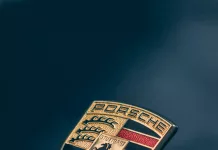With the roll-out of Tesla‘s Full Self-Driving (FSD) Beta v12.3, a flurry of discussions emerged regarding its performance. Notably, most of the early feedback from beta testers appears to be positive, but notable exceptions exist, illustrating the technology’s ongoing evolution.
Unprotected Left Turns: A Benchmark for Progress
Unprotected left turns (UPLs) have long been a litmus test for automated driving systems, and Tesla’s FSD Beta’s ability to handle these scenarios has been closely scrutinized. Prior iterations, particularly version 11, demonstrated challenges with UPLs that subsequent versions sought to overcome.
Chuck Cook’s Road Tests: A Legacy of Evaluation
Chuck Cook, a Tesla Model 3 owner and former US Air Force pilot, has become synonymous with FSD Beta testing due to his persistent trials at a complex UPL in Jacksonville, Florida. This particular intersection gained notoriety early in FSD Beta’s history and garnered a mention in the software’s release notes. Interestingly, after Cook’s experience with v11.4.9, Tesla halted updates to his vehicle as employees were reportedly seen rigorously testing v12 at the same notorious UPL.
FSD Beta v12.3 on the UPL: Taking Neural Nets for a Spin
Chuck Cook wasted no time in putting FSD Beta v12.3 through its paces at his well-known UPL. His test included multiple runs under varying traffic conditions. One of the pivotal changes in this version is its pure reliance on end-to-end neural network artificial intelligence. This approach marks a significant departure from previous versions which utilized hard-coded scenarios, and as Elon Musk suggests, about 300,000 lines of code have been supplanted by Tesla Vision AI’s decision-making capabilities.
Test Drive Outcomes: The Good, The Risky, and The Interventions
Chuck’s testing revealed a mixture of successful maneuvers and risky attempts. In one instance, the car crept slowly to the median instead of merging promptly. Another attempt was particularly unnerving, with the car choosing to proceed with an oncoming pickup reducing speed at the last minute. These moments highlighted the car’s bold decision-making with its advanced AI, sometimes requiring human intervention for safety.
A Closer Look at a Tense Scenario
During one test, a fast-approaching pickup truck forced Cook to take over the vehicle’s controls to prevent an accident—a necessary intervention when the car paused mid-task, confusingly, in the path of oncoming traffic. Cook critically noted this behavior as a serious concern, emphasizing that waiting in the path of traffic to ‘buy time’ is not a viable or safe strategy.
The Verdict on FSD Beta v12.3
Although Tesla’s FSD Beta v12.3 has been mostly well-received by testers, Cook’s experiences underline both the advancements and the areas needing refinement in Tesla’s self-driving technology. The varying degrees of success in these complex driving scenarios suggest that while significant steps forward have been taken, the pursuit of full autonomy continues to be a journey of rigorous testing and continuous improvement.


























